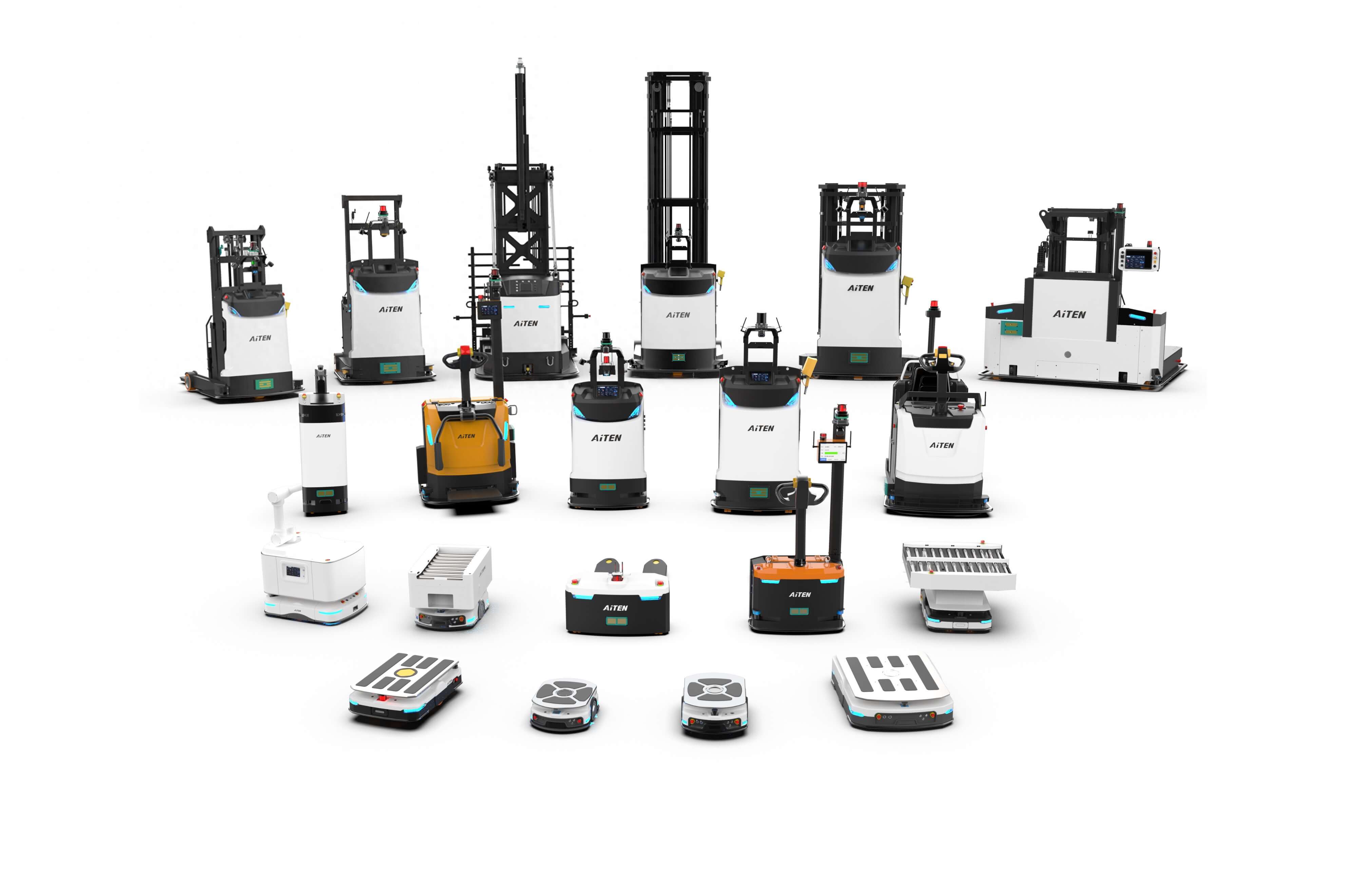Handling Robots vs Palletising Robots: Structure, Functional Differences and Collaborative Application Analysis

In industrial automation and intelligent logistics, handling robots and palletising robots are the two core equipment. Although their application scenarios are different, their core structures and functions are highly similar, and they can significantly improve supply chain efficiency through collaborative operations. In this article, we will analyse the characteristics and value of the two types of robots based on their technical differences, synergistic advantages, and practical cases.

I. Structure and Function: Differences in Similarities
1. Commonality of core structure
Both handling robots and palletising robots adopt modular design and contain three core systems:
- Drive system: motors, wheelsets or tracks to provide power support;
- Navigation system: LiDAR, vision sensors for environment sensing and localisation;
- Control system: AI algorithms to schedule tasks and support autonomous decision-making.
This architecture enables the two to adapt to the automation needs of factories, warehouses and other complex scenarios.
2. Functional positioning differences
Handling robots: mainly used for material transport, and cross-regional transfer, mostly used in cross-floor handling, production line distribution and other scenarios.
Palletising robots: mainly used for cargo stacking, and high-level palletising, mostly used in warehouse stacking, container loading and other scenarios.
Example:
Palletising robot AM15 (AiTEN): Equipped with a powerful lifting system, it supports high-level stacking with a positioning accuracy of ±10mm and is suitable for standardised warehousing scenarios.
Handling robot APe15 (AiTEN): laser SLAM navigation, 1.5-tonne load, adapts to dynamic environments and can be transported across floors.
Ⅱ. Collaborative Operation: 1+1>2 Intelligent Logistics Revolution
Collaboration between handling robots and palletising robots is reshaping the efficiency ceiling of manufacturing and warehousing logistics:
1. Collaborative process example
The handling robot transports goods from the production area to the lift entrance;
Palletising robots receive the goods on the target floor and stack them accurately on the shelves;
An intelligent scheduling system monitors the task status in real time, optimises the path and avoids obstacles.
2. Collaboration Advantage Analysis
- Efficiency improvement: Seamlessly connecting cross-floor and cross-region operations, task processing speed is increased by more than 50%;
- Cost optimisation: reduce manual intervention, reduce manpower and equipment idle costs;
- Precise management: 99.9% inventory accuracy through data synchronisation (e.g. MES system).
Ⅲ. The Actual Case: AiTEN's Intelligent Logistics Solutions
A customer has flat storage and three-dimensional storage, needs cross-floor handling, is time-consuming and labour-intensive, and flat storage of goods placed in disorder, difficult to find goods, high-level goods are difficult to access and prone to error. In response to the customer's demand, AiTEN uses the intelligent handling robot APe15 for the flat storage space, which is put into the lift after handling the goods, and the palletising robot AM15 for the three-dimensional storage space, which picks up the goods from the lift on the first floor and puts them into the shelves. This effectively improves warehouse handling efficiency, reduces labour costs and ensures safe storage and accurate handling of goods.
Other Case Studies: Efficiency Increased by 50%: AiTEN’s Narrow Aisle Handling Solution for the Automotive Industry
Ⅳ. The Future Trend: Intelligent and Flexible
- AI deep empowerment: optimise path planning and load distribution through machine learning;
- 5G+edge computing: low-latency communication supports large-scale multi-machine collaboration;
- Modular expansion: quickly adapt to new scenes (e.g. cold chain, new energy).
Conclusion
Collaboration between handling robots and palletising robots is not only a manifestation of technological integration but also an inevitable direction for the development of intelligent logistics. AiTEN has already achieved cost reduction and efficiency increase for many enterprises through the combined solution of APe15 and AM15. In the future, with the iteration of technology, this kind of collaboration mode will be implemented in more industries, promoting the global manufacturing industry towards a new era of ‘unmanned’.
Ready to explore intelligent handling solutions for your plant? Contact us for a free consultation and tailored advice.
















.webp)







.webp)
.jpg)














(1).png)
